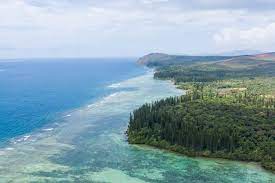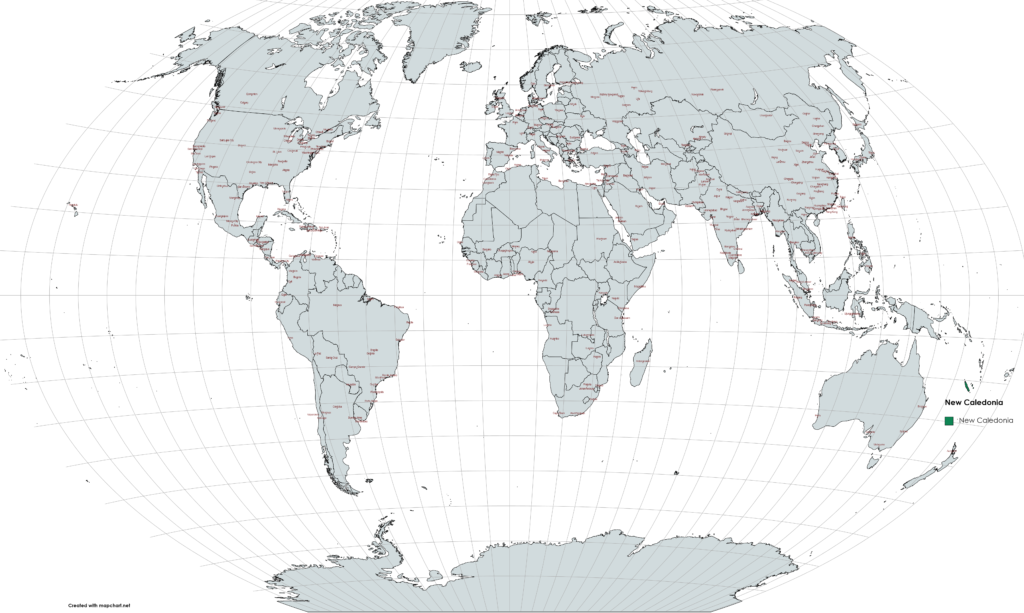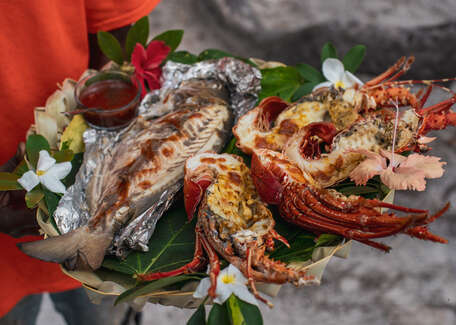New Caledonia travel tips
New Caledonia travel tips: A French territory in the South Pacific, offers stunning coral reefs, diverse landscapes, and a unique blend of cultures.
Provinces 🌎
New Caledonia travel tips. Here is a list of all the provinces of the New Caledonia.

South Province

North Province

Loyalty Islands Province
Before you go 🛩
Important information you should know before your trip
Info

Capital | Noumea
Flag Codes:
ISO alpha-2 NC,
ISO alpha-3 NCL
Currency
Badge | CFP franc
CODE | XPF
NUMBER | 953
SYMBOL | Fr
FRACTION | penny
Mobile Coverage
Dialing Code | +687
SIM Card
Coverage | 3G / 4G / 5G |
Mobile Networks | OPT Mobilis |

Location
New Caledonia is a French overseas territory located in the southwest Pacific Ocean. It is part of the Melanesian subregion and is situated northeast of Australia, east of Papua New Guinea, and south of the Solomon Islands.
Geographically, New Caledonia is an archipelago composed of the main island, Grande Terre, which is the largest and most populous island, as well as numerous smaller islands and islets. The Loyalty Islands, consisting of Lifou, Maré, Tiga, and Ouvéa, are located to the east of Grande Terre. The Belep Islands, located to the northwest, include the main islands of Belep, Art, and Pott.
The capital city of New Caledonia is Nouméa, which is situated on the southwestern coast of Grande Terre. Nouméa serves as the administrative, economic, and cultural center of the territory. Other major towns and centers in New Caledonia include Koné, Bourail, Poindimié, and Koumac.
The waters surrounding New Caledonia are known for their rich marine biodiversity and stunning coral reefs, including the UNESCO World Heritage-listed lagoon, one of the largest and most diverse in the world.
Currency
The official currency of New Caledonia is the CFP franc (Franc Pacifique).
The currency code for the CFP franc is XPF, and it is issued by the Institut d’émission d’Outre-Mer (IEOM).
The CFP franc is also used in other French Overseas Territories in the Pacific, including French Polynesia and Wallis and Futuna.
The CFP franc is fixed to the euro at a rate of 1 euro = 119.3317 XPF.
This fixed exchange rate ensures stability and facilitates economic and financial transactions with France and other countries that use the euro.
Languages
The official language of New Caledonia is French. As New Caledonia is a French overseas territory, French is widely spoken and used in government, education, business, and other official settings. It is the primary language of instruction in schools and is used in written communications, signage, and official documents.
In addition to French, there are several indigenous languages spoken in New Caledonia. The three main indigenous languages are:
Kanak Languages: These are a group of Melanesian languages spoken by the Kanak people, the indigenous inhabitants of New Caledonia. Kanak languages include Drehu, Nengone, Paicî, Ajië, and several others. Each of these languages is specific to different regions or tribes within New Caledonia.
Tahitian: Due to historical connections between New Caledonia and French Polynesia, Tahitian is also spoken by a small number of people in New Caledonia, particularly in the Loyalty Islands.
Other Pacific Languages: Due to migration and cultural diversity, other Pacific languages such as Wallisian (from Wallis and Futuna) and Indonesian languages may be spoken by certain communities in New Caledonia.
Climate 🌡
New Caledonia has a tropical climate characterized by distinct wet and dry seasons. The climate is influenced by its location in the South Pacific and the trade winds that blow across the region. Here are the main features of the climate in New Caledonia:
Wet Season (November to April): This period corresponds to the warmer and more humid months in New Caledonia. It is characterized by higher temperatures, increased rainfall, and occasional tropical storms or cyclones. The wet season is also known as the cyclone season, and it is important to stay updated on weather forecasts and follow any advisories or warnings issued by local authorities.
Dry Season (May to October): The dry season in New Caledonia brings cooler temperatures and lower humidity. This is generally considered the peak tourist season due to the more pleasant weather conditions. The dry season is characterized by sunny days, gentle breezes, and minimal rainfall. It is an ideal time for outdoor activities such as swimming, snorkeling, and hiking.
New Caledonia travel tips
If you’re planning a trip to New Caledonia, here are some travel tips to enhance your experience:
Entry Requirements:
Check visa requirements for your nationality before traveling to New Caledonia.
Island Diversity:
Explore Grande Terre for diverse landscapes, Nouméa for city life, and Loyalty Islands for cultural experiences.
Snorkeling and Diving:
Enjoy the world-class coral reefs. Consider bringing or renting snorkeling gear for a closer look.
Health Precautions:
No specific vaccinations are required, but check with your healthcare provider. Be cautious with food and water hygiene.
Transportation:
Renting a car is ideal for exploring the main island. Public buses and taxis are available. Domestic flights connect outer islands. View Guide.
Cruise Excursions:
Consider joining a cruise to explore the outer islands and coral reefs.
Nature Activities:
Explore natural wonders like the Heart of Voh, Parc Provincial de la Rivière Bleue, and Hienghène’s iconic rock formations.
Enjoy your time in New Caledonia!

The best of the best
New Caledonia’s cuisine is influenced by a blend of French, Melanesian, and other Pacific Island flavors and ingredients.

Bougna
Bougna is considered the national dish of New Caledonia.

Prawns
New Caledonia is known for its delicious prawns, which are often grilled or served in dishes like prawn curry or prawn risotto.

Kanak Cuisine
Kanak cuisine refers to the traditional food of the Kanak people, the indigenous inhabitants of New Caledonia.
Here are some typical foods of New Caledonia:
Coconut Crab: The coconut crab, known as “kastom” in the local language, is a delicacy in New Caledonia. It is the largest land-living arthropod in the world and is often prepared by grilling or cooking it in a traditional Melanesian style.
Baguette and French Pastries: The French influence in New Caledonia is evident in the availability of freshly baked baguettes and French pastries. You’ll find local bakeries and patisseries offering a wide range of bread, croissants, éclairs, and other delectable treats.
Tropical Fruits: New Caledonia is blessed with a variety of tropical fruits, including mangoes, papayas, passion fruit, guavas, pineapples, and bananas. These fruits are often enjoyed fresh, juiced, or incorporated into desserts and fruit salads.
French Wine: As a French territory, New Caledonia offers a selection of French wines, including those from Bordeaux, Burgundy, and Champagne. Wine enthusiasts can enjoy a glass of wine to complement their meals.
It’s worth noting that New Caledonia also has a diverse culinary scene with restaurants and cafes offering a range of international cuisines, including French, Italian, Asian, and Pacific fusion dishes.
Transportation 🚥
More information about this country
Choose your destination 📍🗺
Useful Links ✅



